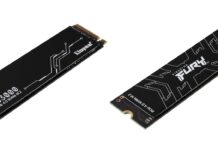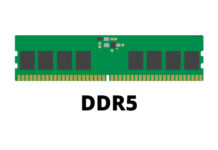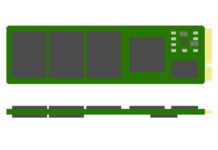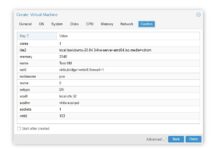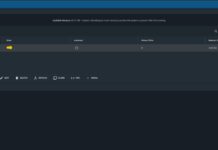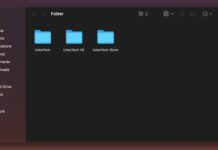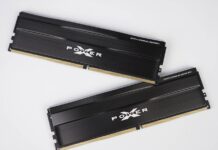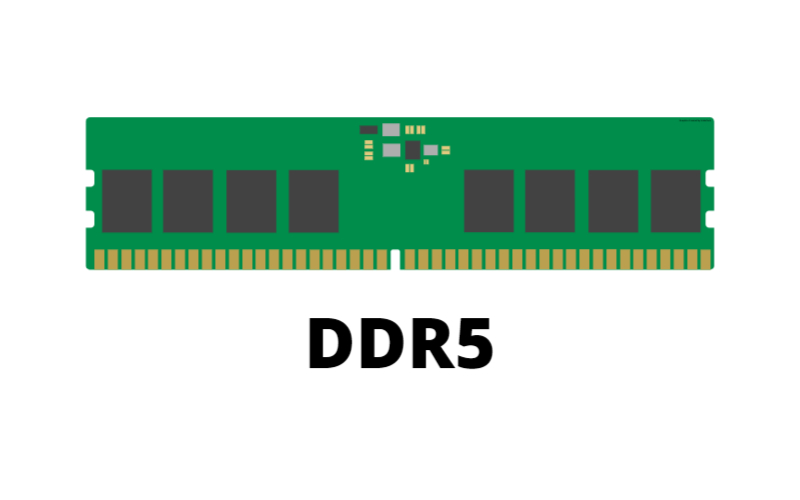
The DDR5 SDRAM standard was released by the JEDEC in July 2020. It was until Intel launched its 12th Generation (Alder Lake) Core processors, that mainstream consumers started to adapt the new technoloy in November 2021. AMD is also slated to exclusively support DDR5 memory in its upcoming Zen 4 (Ryzen 7000) platform. It will be the primary memory standard for most computers in the next half a decade.
Do not confuse DDR5 with GDDR5, which is mainly used for graphics cards’ video memory buffer and is actually based on the older DDR3 standard.
Higher Transfer Rate and Density
| DDR4 | DDR5 | |
|---|---|---|
| Transfer Rate | 1600 – 3200 MT/s | 4800 – 8400 MT/s |
| Theoratical Bandwidth | 25.6 GB/s | 67.2 GB/s |
| Chip Density | up to 16 Gb | up to 64 Gb |
| Capacity per DIMM | up to 64 GB | up to 256 GB |
| Channel per DIMM | 1 | 2 |
| On-die ECC | No | Yes |
| Base Voltage | 1.2 Volt | 1.1 Volt |
Like every new generation of memory standard, DDR5 improves significantly on the performance and density of the RAM modules. The default JEDEC specification is set at 4800 MT/s (equals to bandwidth of 38.4 GB/s), which is already 50% faster than the original DDR4’s 3200 MT/s. According to Micron and SK hynix, DDR5 RAM can potentially increase to have up to 8400 MT/s with 67.2 GB/s of bandwidth, when the technology matures in the near future.
The single 80-bit (64-bit for non-ECC) channel per DIMM is separated into two independent 40-bit channels with expanded16-byte burst length, which allows the DDR5 RAM to deliever two sets of data to the CPU simultaneously. This can reduce latency, boost efficiency and ultilization.
Memory chips can now be 64 Gb in size, which enables each DIMM to have a maximum capacity of 256 GB, 4 times larger than in DDR4. On-die ECC (Error Correction Code) is availiable on DDR5 to provide more data reliablity for the higher-density chips.
Onboard Power Management IC (PMIC)
DDR5 modules will operate at 1.1 V by default, instead of 1.2 V, to reduce power consumption. More voltage will be needed, if you are overclocking the RAM beyond the default JEDEC frequency (DDR5-4800). The power management circuitary and controller for DDR5 is moved from the motherboard onto the RAM module itself for better signal integrity. They are responsible for converting the 5 V from the power supply to the required voltage of the memory chips. This can result in less complex and cheaper motherboards, but consumers will still have to pay the cost for the possibly more expensive DDR5 DIMMs.
Intel XMP 3.0 Support
Alongside its 12th Gen processors, Intel also rolls out the latest version of its eXtreme Memory Profile or XMP for DDR5 RAM. It is used to apply settings (voltage, frequency and timings) to run your memory at the advertised speed from most manufacturers. With XMP 3.0, the larger 384 bytes onboard storage lets the RAM module keep up to five total profiles, which two of them can be rewritable by the users.
Feel free to leave comments below. Share the article if you enjoy reading it. Follow us on Twitter, Facebook, Instagram and Pinterest.
Support this website simply by shopping on Amazon and Newegg. We will receive small kickbacks, if the above affiliate links are used to make any purchases.










